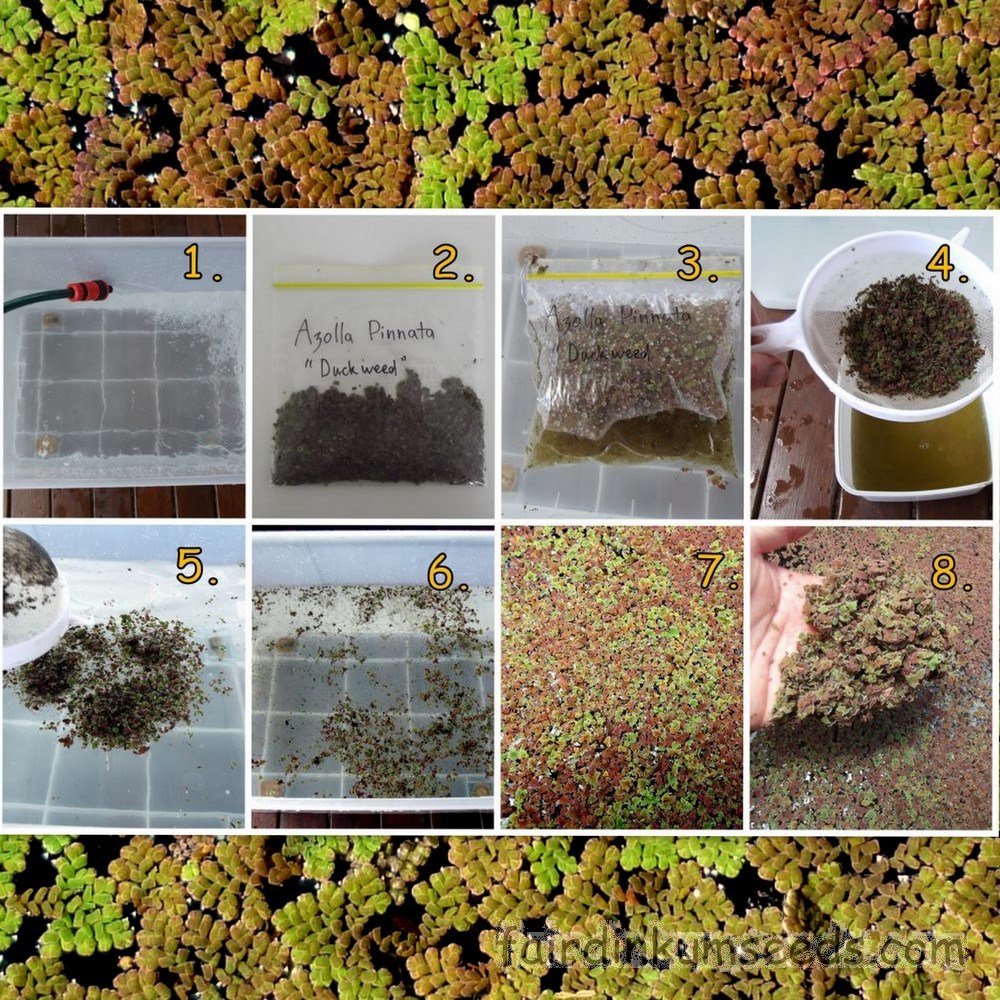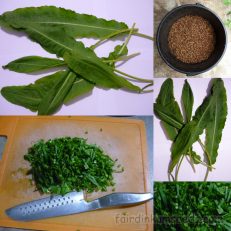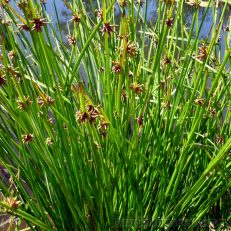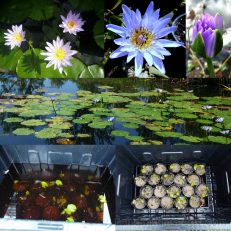Please read text!
Water Fern Azolla Pinnata Duckweed Culture
~30 grams or ~1 ounce bag starter culture of this awesome Aussie aquatic species!
Azolla Pinnata, Red Azolla, Water Fern, Duckweed or whatever you want to call it is a fern like native that has been eaten by Aborigines of Australia for millenia, and is only now finding popularity in Asia and European cuisine.
It’s colour changes at whim, from bright red maroon, to vivid green, depending on light and temperatures, but generally there is a bit of a mixture of both.
It has a crisp texture, quite like finely grated carrot and like Lemna Minor and Wolffia Arrhiza, it is normally eaten in salads, dumplings, fritters, omelette’s and burgers.
It’s a very nutritious native plant that should be much more commonly used, as it grows so easily, tastes great, and has a much higher protein level than most vegetables, making it a great meat substitute and even more environmentally responsible than soy production.
Not only is it great for us humans, its also proven itself time and time again as a cheap nutritious feed for goat, cattle, sheep, chicken, and surprise surprise, duck production!
Increases milk output in both cattle and goats and can be used as 70% of the feed in a chook feed and 90% of a duck feed, producing fast growth and high egg yields.
Our chooks and guinea pigs will eat as much as I can give them, so I have a water drum set up next to the cage, and each day when I lock them up, I skim a couple handfuls off the top of the water, and chuck in for them.
Everyday those couple handfuls are replaced as it grows so quickly, and as it forms a mat on the surface, it stops the mozzies breeding.
Great for cattle/horse/goat water troughs!
They are also invaluable for fish breeding and mosquito management of ponds dams and lakes, especially in commercial fish production settings.
It’s a great supplemental feed for the parent fish, and it shelters the fry from both the parents and bird attack.
Fish food recipe.
I make pellets or crumble by mixing sun dried powdered Azolla, Lemna and Wolffia with BSF(black soldier fly), Daphnia, Ostracods, Blow fly larvae, worms, meal worms, and/or whatever I can scrape up, and I use and egg or two as a binder.
Wack it through a hand crank meat mincer and lay the extrusion on a tray in the sun to dry and you get instant “worms”. Fish love this shape better than pellets in my experience, especially larger or wild caught stock.
Cut the “worms” up before you sun dry them and you get “pellets”.
I can do 2mm, 4mm, 6mm etc with my mincer just by changing the screens.
Rub the fully sun dried pellets through a strainer and you get “crumble”.
My spangled perch seem to do great off it, and as it is much fresher than the commercial stuff.
I personally believe the nutritional benefits are higher, and ecologically it is so much better than using “trash fish” and anchovies like the commercial feed companies do.
Fish farming has a great meat conversion rate compared to cattle or sheep etc, but it is still 100% reliant on the wild harvest and netting of huge numbers of fish.
Something many folks don’t understand.
Anyway, it’s also great for providing a habitat for frogs, which are in turn a great benefit as insect control!
Mozzies down at your dam? Just get some of this awesome stuff established!!!
Easy plant to grow but you must do as I suggest, if you want success.
Here is a step by step so you can’t go wrong.
1. Right now, go acquire a clean container as large as is practical (using a couple polystyrene boxes from the supermarket is OK, but large 55lt+ plastic “roller boxes” from the $2 shop are much much better).
Fill 3/4 to the top with tap or rain water and sit it in a cool semi-shaded spot like on the balcony or beside the house..
You MUST let it sit for a while, at least a week if you are using town tap water as the chemicals used in some district can really be aggressive on damaged plant tissue.
That is their design as they are added to kill algae, which is a form of plant too.
I don’t recommend river or pond or creek water, only rain, or at worst aged tap water.
This is because some natural systems have mini critters that damage the root and central vein of the plant.
To the naked eye it looks “clean”, but it is very hard to establish a culture in water that contains these fellas.
Once you have a strong culture it isn’t an issue as the plants are plentiful and hardy, but if they are sick after the long journey, the extra stress of getting munched may be too much.
NO FISH AND NO TADPOLES, yet!!!(same reasons)
You will no doubt FAIL, if you try to start a culture with these water fellas eating them faster than it can replicate in the beginning under high stress conditions. Trust me.
2. Anyways, now you are ready to rock, water is set up and aging.
Come and buy the “Water Fern Azolla Pinnata” from you favorite seed supplier, I recommend me…
3. When it arrives add 1 cup of water from the container and some air then seal it again and give it a good shake, then float the baggie of smelly plant matter in the water for half an hour to help acclimatize and rinse it.
4. Carefully pour off that bit of water that you added to the bag onto the garden or a pot plant with out letting the plant wash away. Strainer helps.
This helps remove some of the bacteria that has built up over the long travel time.
5. Then add the now rinsed plant matter to the container.
It still may/will stink, quite a lot, and the plants may look very damaged and mostly dead at this stage.
This is absolutely, totally, 100%, normal.
Remember that lettuce you forgot about at the back of the fridge for a couple months, same theory.
Damaged and decomposing cells stink, just how it is.
BUT, the larger % of cells that are live will survive and thrive, once the dead cells are washed away it it is given a nice home and time to recover.
Trust me!
6. This is the hardest bit, so pay attention folks.
Don’t look at it, don’t stress about it, and ignore the horrible dark green colour the water goes over the next month or so.
If the water level drops to half full, just top it up again to 3-4 full.
That’s it, and if you do that, I pretty much guarantee success.
In just 6-8weeks, the water pH and nitrate levels will have stabilized, and the plant growth will be increasing at a very rapid rate.
After a few months there should be a nice little spreading patch on the waters surface
7. Once the surface is covered, 99% of the algae in the water will die and the nutrients will be absorbed by the Azolla Pinnata.
At this stage its growth is totally unstoppable and you can easily harvest a huge handful every week.
8. Ready to eat. Just use it like seaweed in riceballs, cooked in vegetable patties or a handfuls in salads just like you use cress or lettuce. Great stuff!
This is also the stage you can start to use it to stock another pond, dam or water feature.
this is when you add it to your fish or tadpoles.
Just chuck a handful in every time you think of it and as long as you add it faster than the fish, birds and critters can eat it, and a little always survives to replicate, the culture will become the dominant plant life in the end.
Here is a bit of data I pinched online. As you can see, it’s not just tasty!>
“Another amazing quality of the planet is its ability in capturing and fixating CO2. The plant is believed to have had a significant role in reversing a greenhouse effect that had caused the region around the Arctic Ocean to turn into a hot, tropical environment around 49 million years ago. This episode that turned the earth towards it’s present icehouse state and is know by academics as the “Azolla event”!
Grown by us organically, no nasties, no chems, no problems!!!





